Tae Ho Lee 教授
博硕士生导师
联系邮箱:[email protected]
个人简介
Tae Ho Lee,男,教授,博士生导师。2003年于加拿大麦吉尔大学生物化学专业获理学博士学位,2003—2009年于美国哈佛大学医学院贝斯以色列女执事医疗中心进行博士后研究。2012—2017年为美国哈佛大学医学院助理教授,2017年以“第三层次”人才引进熟女a片 。2017年入选福建省“外专百人计划”,2019年入选福建省引进高层次人才(境外B类),2020年荣获第十一届福建省“友谊奖”称号,2021年入选国家“高端外国专家引进计划”。 Lee教授长期从事神经系统疾病研究,在衰老和阿尔茨海默病(AD)的研究领域所取得的原创性突破得到学术界公认。先后得得到了国家自然科学基金委员会、福建省科学技术厅、美国国立卫生研究院、美国老化研究联合会和AD协会等科研基金的支持。以第一/通讯作者在Nature,Cell,Nat Cell Biol,Mol Cell,Nat Med,JCI,JPR等SCI收录的高IF期刊上发表学术论文70余篇。先后获得BrightFocus基金会阿尔茨海默病研究奖、马萨诸塞州阿尔茨海默病研究中心奖、阿尔茨海默病协会欣赏证书、阿尔茨海默病协会研究新人奖、美国联邦老化研究所研究新人奖、美国国立卫生研究院独立之路奖。担任《Frontiers in Cell and Developmental Biology》和《Gene Reports》期刊副主编,《Frontiers in Oncology》期刊编委。
研究领域
神经退行性疾病的发病机制与干预研究
主持的项目
1.国家自然科学基金委员会,面上项目,82271449,靶向死亡相关蛋白激酶1治疗阿尔茨海默病的新型小分子调节剂的开发研究,2023-01-01至2026-12-31,52万元,在研,主持
2.国家自然科学基金委员会,面上项目,81970993,死亡相关蛋白激酶1介导阿尔兹海默病发生的APP磷酸化、APP加工和Aβ沉积的新型分子机制的研究,2020-01-01至2023-12-31,55万元,结题,主持
3.福建省科学技术厅,科技创新联合资金项目,2024Y9094,DAPK1通过SENP1/SUMO通路影响Tau翻译后修饰及蛋白稳态参与AD进展的机制研究,2024-12至2027-12,100万元,在研,主持
4.福建省卫生健康委员会,科研人才培养项目医学创新课题,2019-CX-36,靶向治疗阿尔茨海默病的新型DAPK1抑制剂的开发,2019-09至2022-08,12万元,结题,主持
5.福建省科学技术厅,自然科学基金面上项目,2019J01297,新型阿尔兹海默病动物模型的构建及其研究,2019-07至2022-06,8万元,结题,主持
6.Alzheimer'sassociation,Research Grant,AARG-17-528817,A Novel Mechanism of Alzheimer's Disease Signaling Pathway,2018-01至2020-12,100万元,结题,主持
科研成果(近五年以通讯作者发表的论文)
1. Chen, D., Li, R., She, F., Chen, J., Cho, S. M., Yang, B., Tian, Y., Guan, L., Zheng, X., Wang, Q., Wang, L., Park, S. W., Tao, W., Zhang, T., Kim, B. M., & Lee, T. H. (2025). Saikosaponin C ameliorates tau-related pathology by modulating oxidative stress and MAPK axis in Alzheimer's disease. Journal of ethnopharmacology, 352, 120221. (IF:5.40,中科院1区)
2. She, F., Zhang, T., & Lee, T. H. (2025). Multifaceted role of zipper-interacting protein kinase beyond cell death: Implication of ZIPK dysregulation in neuronal and vascular injuries. Pharmacological research, 216, 107793. (IF:10.5,中科院1区)
3. Mei, Y., She, F., Zhang, L., Kim, G., Li, R., Zheng, X., Wang, Z., Chen, R., Wang, L., Chen, D., Kim, J., Zhang, T.*, and Lee, T.H.* (2025) Zipper-interacting protein kinase mediates neuronal cell death and cognitive dysfunction in traumatic brain injury via regulating DEDD. Cell Death Dis. 16: 151. *Co-corresponding author. (IF:9.60,中科院1区)
4. Zhang, T., Tian, Y., Zheng, X., Li, R., Hu, L., Shui, X., Mei, Y., Wang, Q., Zhang, M., Zheng, X., Wang, L., Chen, D., Tao, W., and Lee, T.H. (2024) Activation of transient receptor potential vanilloid 1 ameliorates tau accumulation induced synaptic damage and cognitive dysfunction via autophagy enhancement. CNS Neurosci. Ther. 30: e14432. (IF:5.50,中科院1区)
5. Tian, Y., Zheng, X., Li, R., Hu, L., Shui, X., Wang, L., Chen, D., Lee, T.H.*, and Zhang, T.* (2024) Quantitative proteomic and phosphoproteomic analyses reveal a role of death-associated protein kinase 1 in regulating hippocampal synapse. Mol. Neurobiol. 61: 1794-1806. *Co-corresponding author. (IF:5.10,中科院2区)
6. Zhang, T., Kim, B.M.*, and Lee, T.H.* (2024) Death-associated protein kinase 1 as a therapeutic target for Alzheimer's disease. Transl. Neurodegener. 13: 4. *Co-corresponding author. (IF:10.80,中科院1区)
7. Wang, L., Shui, X., Zhang, M., Diao, Y., Chen, D., Zhou, Y.*, and Lee, T.H.* (2023) Potential implications of miRNAs in the pathogenesis, diagnosis, and therapeutics of Alzheimer’s disease. Int. J. Mol. Sci. 24: 16259. *Co-corresponding author. (IF:5.60,中科院2区)
8. Zhang, M., Shui, X., Zheng, X., Lee, J.E., Mei, Y., Li, R., Tian, Y., Zheng, X., Wang, Q., Wang, L., Chen, D., Zhang, T., Kim, B.M., Kim, J., and Lee, T.H. (2023) Death-associate protein kinase 1 phosphorylates MDM2 and inhibits its protein stability and function. Arch. Pharm, Res.46: 882-896. (IF:6.70,中科院2区)
9. Wang, L., Shui, X., Zhang, M., Mei, Y., Xia, Y., Lan, G., Hu, L., Gan, C.-H., Tian, Y., Li, R., Gu, X., Zhang, T., Chen, D., and Lee, T.H. (2022) MiR-191-5p attenuates tau phosphorylation, Aβ generation, and neuronal cell death by regulating death-associated protein kinase 1. ACS Chem. Neurosci. 13: 3554-3566. (IF:5.78,中科院3区)
10. Wang, L., Shui, X., Mei, Y., Xia, Y., Lan, G., Hu, L., Zhang, M., Gan, C.-H., Li, R., Tian, Y., Wang, Q., Gu, X., Chen, D., Zhang, T., and Lee, T.H. (2022) MiR-143-3p inhibits aberrant tau phosphorylation and amyloidogenic processing of APP by directly targeting DAPK1 in Alzheimer’s disease. Int. J. Mol. Sci. 23: 7992. (IF:6.208,中科院2区)
11. Gan, C.-H., Zou, Y., Chen, D., Shui, X., Hu, L., Li, R., Zhang, T., Wang, J., Mei, Y., Wang, L., Zhang, M., Tian, Y., Gu, X., and Lee, T.H. (2022) Blocking ERK-DAPK1 axis attenuates glutamate excitotoxicity in epilepsy. Int. J. Mol. Sci. 23: 6370. (IF:6.208,中科院2区)
12. Chen, D., Lan, G., Li, R., Mei, Y., Shui, X., Gu, X., Wang, L., Zhang, T., Gan, C.-H., Xia, Y., Hu, L., Tian, Y., Zhang, M., and Lee, T.H. (2022) Melatonin ameliorates tau-related pathology via the miR-504-3p and CDK5 axis in Alzheimer's disease. Transl. Neurodegener. 11: 27. (IF:12.60,中科院1区)
13. Zhang, T., Xia, Y., Hu, L., Chen, D., Gan, C.-H., Wang, L., Mei, Y., Lan, G., Shui, X., Tian, Y., Li, R., Zhang, M., and Lee, T.H. (2022) Death-associated protein kinase 1 mediates Aβ42 aggregation-induced neuronal apoptosis and tau dysregulation in Alzheimer’s disease. Int. J. Biol. Sci. 18: 693-706.(IF:10.75,中科院2区)
14. Gan, C.-H., Zou, Y., Xia, Y., Zhang, T., Chen, D., Lan, G., Mei, Y., Wang, L., Shui, X., Hu, L., Liu, H., and Lee, T.H. (2021) Inhibition of death-associated protein kinase 1 protects against epileptic seizures in mice. Int. J. Biol. Sci. 17. 2356-2366. (IF:6.580,中科院2区)
15. Kim, N., Wang, B., Koikawa, K., Nezu, Y., Qiu, C., Lee, T.H. *, and Zhou, X.Z.* (2021) Inhibition of death-associated protein kinase 1 attenuates cis P-tau and neurodegeneration in traumatic brain injury. Prog. Neurobiol. 203. 102072. *Co-corresponding author. (IF:11.685,中科院1区)
16. Chen, D.*, Zhang, T., and Lee, T.H.* (2020) Cellular Mechanisms of Melatonin: Insight from Neurodegenerative Diseases. Biomolecules 10. 1158. *Co-corresponding author. (IF:4.879,中科院3区)
17. Chen, D., Mei, Y., Kim, N., Lan, G., Gan, C.-H., Fan, F., Zhang, T., Xia, Y., Wang, L., Lin, C., Ke, F., Zhou, X.Z., Lu. K.P. and Lee, T.H. (2020) Melatonin directly binds and inhibits death-associated protein kinase 1 function in Alzheimer’s disease. J. Pineal Res. 69. e12665. (IF:13.007,中科院1区)
18. Wang, L., Zhou, Y., Chen, D., and Lee, T.H. (2020) Peptidyl-prolyl cis/trans isomerase Pin1 and Alzheimer’s disease. Front. Cell Dev. Biol. 8. 355.(IF:6.684,中科院2区)
19. Gan, C.-H., Zhang, T., and Lee, T.H. (2020) The genetics of Alzheimer’s disease in the Chinese population. Int. J. Mol. Sci. 21. 2381. (IF:5.923,中科院2区)
20. Chen, D., Wang, L., and Lee, T.H. (2020) Post-translational modifications of the peptidyl-prolyl isomerase Pin1. Front. Cell Dev. Biol. 8. 129. (IF:6.684,中科院2区)
21. Zhou, Y., Wang, L., Wang, C., Wu, Y., Chen, D., and Lee, T.H. (2020) Potential implication of hydrogen peroxide in the pathogenesis and therapeutic strategies of gliomas. Arch. Pharm, Res. 43. 187-203. (IF:4.946,中科院3区)
22. Zhang, T., Chen, D., and Lee, T.H. (2020) Phosphorylation signaling in APP processing in Alzheimer’s disease. Int. J. Mol. Sci. 21. 209. (IF:5.923,中科院2区)
(更新于2025年7月)



